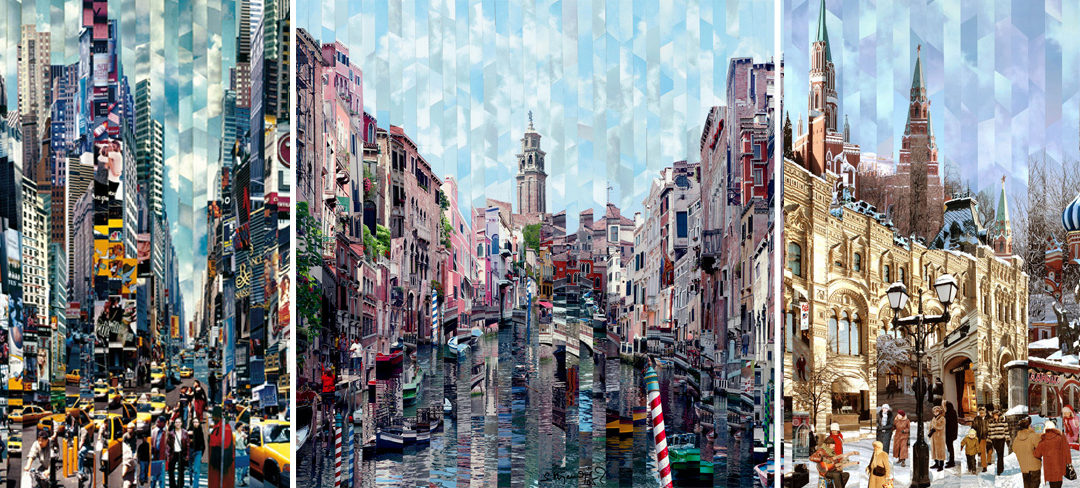
Aug 15, 2016
MENDJISKY
Serge Mendjisky was born in 1929 in Paris. His father, Maurice Mendjisky, was a painter of the School of Paris, this is how Serge acquainted with the world of Arts dice childhood. After completing his studies at the Beaux Arts in Paris, he soon became a recognized artist and exhibited in Europe, Japan and the United States. Already, he uses photography to make its preliminary studies in painting.
In 2000, he decided to use photography as the only means of expression. He borrows the collage technique to alter photographic images and articulate its multidimensional worldview. The multiple perspectives, expressed in his collages evoke clearly the analytical phase of Cubism. Pablo Picasso, Serge Mendjisky well known thanks to his father’s activities on the art scene at the time, told him that the actual Cubism would be fully achieved through photography. He always kept this vision in mind, and after many years of technical exploration, he found a way to question not only the appearance of the world, but also our perceptual behavior.
By decomposing and recomposing the backgrounds of some of the most famous cities of the world like New York and Paris, He creates new urban landscapes which question our perceptive faculties.
Volumes, lights and colors create different visual rhythms that establish new relations between time and space. Through the creative goal Serge Mendjisky Broadway becomes an explosion of colored lights, while the “Down Town” New York poetically waltz with a cello sounds. Recognizable cityscapes are redefined and reformulated reality becomes three-dimensional.
The work of Serge Mendjisky is represented in public collections as well as private, the one of the Museum of Modern Art in Paris, the Museum of Art in Philadelphia and the Museum of Fine Arts Pushkin in Moscow.
In 2014, Museum opens Mendjisky dedicated to ” School of Paris” in Paris.
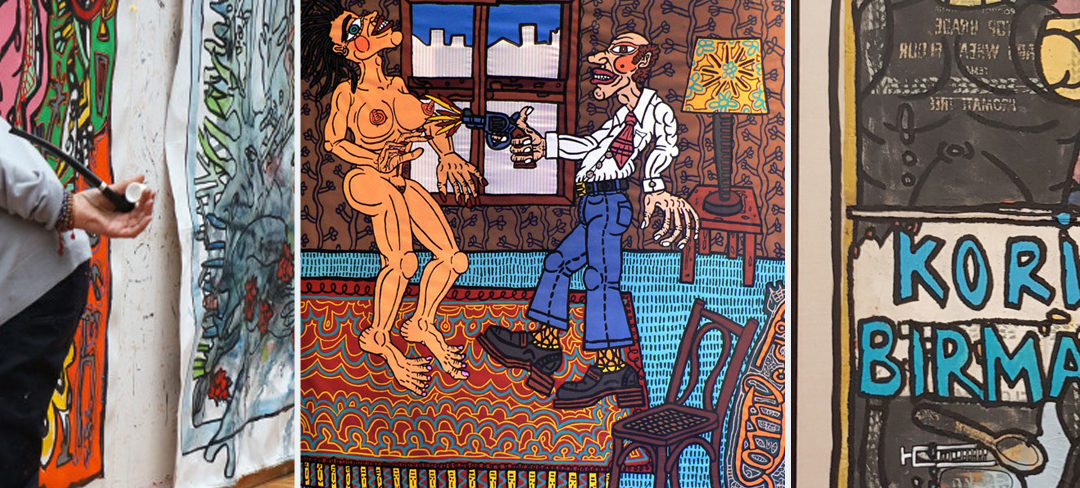
Aug 15, 2016
Robert Combas is born in 1957 in Lyon.
He brought the dawn of the 80 new figurative painting.
Present on the art scene in 1979 he created a movement that Ben called Figuration Libre movement grouping: Rémi Blanchard, François Boisrond, Robert Combas and Hervé Di Rosa.
Painting done freedoms she talks about society, violence, sexuality, suffering people, their small joys, their smallness, their size …
She was inspired by the rock in which the artist is an amateur end, popular images, childhood books, textbooks everything that makes a popular culture accessible to all.
“I work in both abstract painting by jets, a kind of abstract expressionism The figurative is the fun side, walk on earth. Initially it was a ridiculous reaction against the intellectual paintings from the middle of two worlds . There are still different are messages in my painting. initially it was some energy, I wanted to paint what I wanted in the comics we’re stuck with the characters, as in this painting, I am art 70s Me I’m from popular areas, I was living in free fully free, even by the format. ”
“The painting of Robert Combas is perpetually on the alert as an organization. His work is indeed a constantly open structure and, therefore, needs to continually” food “to stay alive.
It goes without saying that such a phenomenon is not possible without the presence of the “other” is tell the viewer. Between this and work of Combas weaves a complementary relationship where one needs the “other” . and this means the image is used by Combas for “cause”, to get a reaction of the viewer and to “invite” then, is to say, whisper: “Come here to talk with me I want you tell stupidity, violence, beauty, hatred, love, serious and funny, logic and absurdity that surround our daily lives. ”
The artistic language does not stop at the borders of the intimate. On the contrary, it is starting from this item “intimate” it will then exceed to become “social”. A language which, at the same time is a positive attitude; because beyond the scenes of violence or intense sexuality, beyond the word picture combination (or sentence), the work of Robert Combas is primarily a gesture.
This gesture has no educational basis (the subject is not the epicenter) but is a behavior that is thirsty to broaden its scope beyond closed borders of a language of history Art, to turn to what until now had been despised by the elite that dominated art during the period of the 70s: children’s drawings, crazy, comics, music the rock childish “is actually nothing more than a strategy: that of a painter who wants to enlarge the field of action of its iconography.
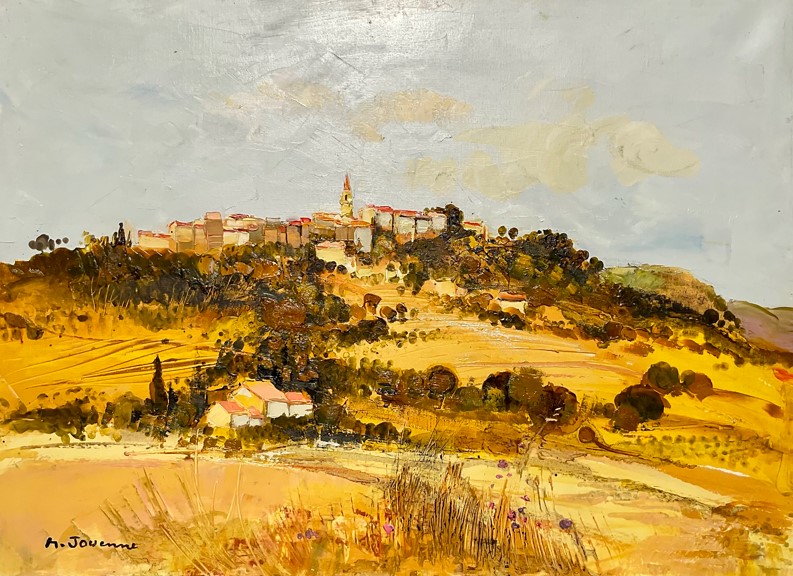
Aug 15, 2016
Michel JOUENNE was born on 25 January 1933 in Boulogne-sur-Seine.
In 1991, he was appointed Official Painter of the Navy.
Prolific artist, painter, but also lithographer, illustrator, and sculptor, Michel Jouenne is part of this nursery of talents from the “Young Painting of the Fifties”. His works illustrate life, the natural beauty of our planet through landscapes filled with color. Each of his paintings reveals the joy of his creation. He amazes with his opaque and translucent materials at the same time, his large watercolor plans, and his luminous shimmers. His talent was rewarded in high places. In 1987, he was made Knight of Cultural and Artistic Merit, then Knight of the Legion of Honor in 1990.
In 1987, he was made Knight of Cultural and Artistic Merit, then Knight of the Legion of Honor in 1990. He also produced several paintings representing views of the Capital: The Eiffel Tower, The Sacré Cœur, The cranes in Paris, or The Grand Palais. He also produced several paintings representing views of the Capital: The Eiffel Tower, The Sacré Cœur, The cranes in Paris, or The Grand Palais.
Hervé Bazin, for whom he made some illustrations in his book “Qui j’ose aime” (published in 1986 by Grasset) said of him: “Jouenne is a cantor of nature… Figurative, he is never a slave to subject he uses…”
Since the start of his career, Michel Jouenne has won fifty medals, including the gold medal for French artists in 1976.
PRICE
1987 – Chevalier du mérite culturel et artistique.
1990 – Chevalier de la Légion d’honneur.
1991 – Peintre officiel de la Marine.ACQUISITIONS
Musée d’art moderne de la ville de Paris. Musée du Petit Palais, Genève. Musée 1’lle-de-France, Fontainebleau. Musée Världen, Suède. Musée des Baux-de-Provence. Musée Nicolas Sursock, Beyrouth. Préfecture de Seine-et-Oise. Préfecture des Yvelines (aquarelle). Préfecture de l’Ardèche. Conseil général des Yvelines. Villes de Paris, Taverny, Mantes-la-Jolie, Versailles, Viroflay, Deuil-la-Barre, Aubenas, Fontenay-aux-Roses, Angers, Mulhouse, Eygalières. Présidence de la République.BIBLIOGRAPHIE
JOUENNE – Collection ” Peintre d’aujourd’hui ” par André Flament (Editions l’Archipel).
JOUENNE – Collection ” L’OEuvre de l’homme du temps ” par Aubert jean (Editions Ventaol).
JOUENNE – Collection ” peintre de notre temps ” par Maguy Furhange.
JOUENNE – Collection ” A la découverte des peintres contemporains ” par René Leroy.
JOUENNE – Collection ” Artspective ” (éditeur dunes et fils).
JOUENNE – Monographie des Editions Aquitaine André Bump.
JOUENNE – Collection ” Le Léopard d’or ” (Edition Guigné). JOUENNE – Collection ” Play-Time ” préface d’Hervé Bazin.
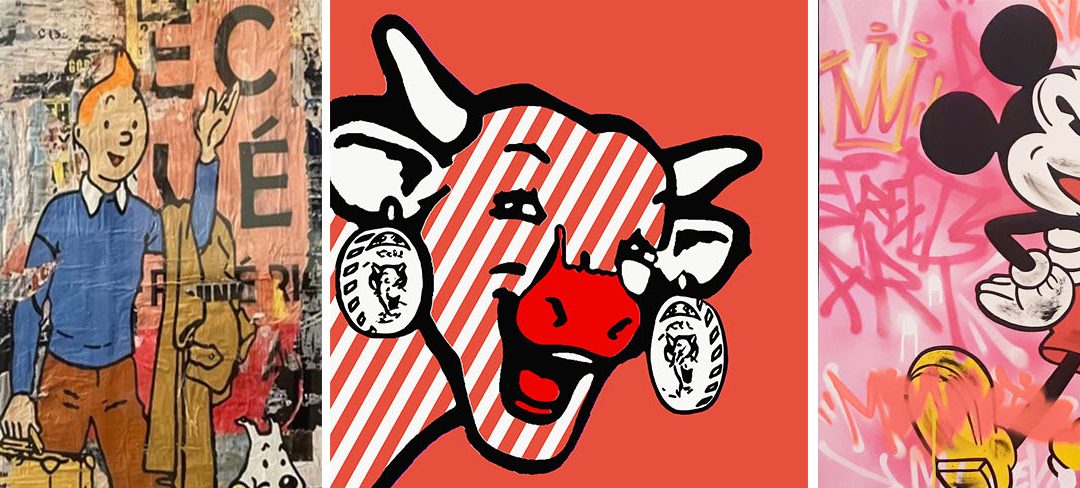
Aug 15, 2016
Gnidzaz is born in 1947 in Toulouse.
Jean-Michel Gnidzaz we especially know bi and three-dimensional abstract compositions that marked his work in the 1990 Making use of collage games and folding single sheets of paper, rigorous geometric arrangements of directly effective color contrasts, the artist then revivifiait kinetics on a tradition unspectacular fashion. Jean-Michel Gnidzaz thus inspired the conceptual essence of the work of Soto rather than their tendency to gigantism, and refused the sanitized accuracy of other painters of the kinetic movement in favor of a personal touch restoring an essential gesture at a certain performativity of painting. Through his research, Jean-Michel Gnidzaz was able to produce a strong work, able to stand out with impertinence of figureheads who staked his training at the School of Fine Arts in Toulouse and the beginnings of his artistic career.
After a decade of reflection devoted to geometric compositions, Jean-Michel Gnidzaz breaks today with the pure abstraction, and a new direction in his work. Since 2003, he initiated a new series of portraits dedicated to the cultural icons of the twentieth century. Struck by the persistence in the collective unconscious of certain images or photographs of major cultural figures of the twentieth century, in particular those facing rebellion synonymous with the established order, Jean-Michel Gnidzaz questions here their iconic status.
Neutralizing the background of the original photograph, recomposing the portrait from two games and trichromatic, flat tints and alternating colored stripes reintroducing some kinetics, he deprives these incunabula of contemporary history of identification too immediate.
So aside for a moment of consensus, respect agreed that their reserves usually these popular idols found some ability to belabor the viewer. The process grows to take a quick historical perspective to evolve our questions: what today would mean the beades, James Dean, or even Coluche in our society; what place they occupy in the minds of future generations; they escape the decorative status to which the commercial exploitation of their image relegated them? No, not yet have the answer, but the work of Jean-Michel Gnidzaz questions wisely.
This new series of portraits, and the flood of questions it raises arise fail as a new milestone in his artistic career and makes us curious to future developments.
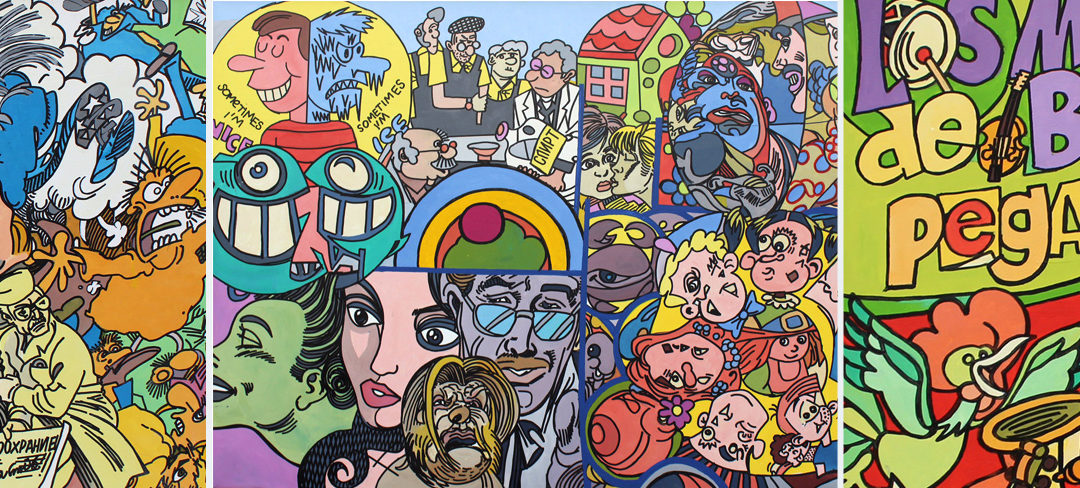
Aug 15, 2016
ERRO is an Icelandic artist, whose real name Gudmundur Gudmunson, born July 19 to Ólafsvík 1932.He arrived in Paris in 1958, after art and mosaic studies. It will become one of the major figures of narrative figuration.
During his travels around the world, Erró collect images (advertisements, news photos, cartoons, posters, policy papers) that are his source of inspiration. It selects, assembles, accumulates at his pleasure – always with humor, sometimes with anguish and violence – on the canvas to form tables are all reading that view. Painting is a place of experimentation, where it can do the old with the new. It is the private form of utopia, the pleasure of contradicting the happiness of being alone against all, the joy of cause. It reveals and denounces the aberrations of our society: consumer directed erotic mercantile revolutions, existence Americanization …
In some of his compositions, he cleverly inserts characters from paintings by Ingres, Delacroix, Léger and Picasso, which was found coexisting with movie stars, politicians or comics heroes.
He often works in series : Chinese cycles , political, erotic . I need efficient equipment and , during my travels, I searched everywhere in discount stores books in kiosks . I accumulate a huge amount of material , and when I met a lot of images relating to a theme, it’s a sign to start a series. The process then is to select images , in the ” married ” together to make collages and paintings .
In June 2001, the Erró Collection of the Museum of the City of Reykjavík is presented to the public in its new framework Hafnbarhúsid in favor of a major retrospective.
Numerous exhibitions devoted to his work both in France and abroad.
Several retrospective was dedicated to him in 1985 at the Modern Art Museum of the City of Paris and in 1999 at the National Gallery Jeu de Paume. In 2005, the Strasbourg Museum of Modern and Contemporary Art of Palma de Mallorca and the Mannheimer Kunstverein present a retrospective exhibition (1958- 2004) and the IVAM in Valencia and Alcalá 31 in Madrid in 2006.
Page 9 of 11« First«...7891011»







